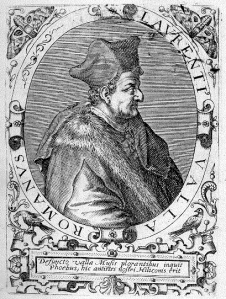Hello everyone! My name is Aisling Burke, I am a recent graduate of University College Cork with a BA Single Honours in English with Computer Science. As a student whose background is predominantly based on English literature, I am keen to explore how digital technologies are now being exploited in order to explore new forms and genres of literature. My current areas of interest include: digital literature, intertextuality, combinatorial literature, publishing, and E-ink technologies.
An interesting area that I have recently come across is electronic literature. Katherine Hayles provides a concise description of e-lit as literature that is “digital born”, a first-generation digital object that has been created on a computer and that is usually meant to be read on a computer, as opposed to print literature that has been digitized. (Electronic Literature: What is it?) The Electronic Literature Organization which was set up in 1999 to encourage the teaching, reading and writing of literature as it changes in the digital world, adds further clarity by defining e-lit as “works with important literary aspects that take advantage of the capabilities and contexts provided by the stand-alone or networked computer.”
In contrast to print literature that appears on a page, electronic literature is designed to engage the reader’s senses. The reader experiences the literature in a range of ways which incorporate sight, sound, touch and interactivity. The reader/user also plays a part in the narrative, which transforms the narrative from a static linear text to a dynamic and sometimes fragmented one, thus allowing a new form of engagement with the text. Therefore in electronic literature the reading process becomes active and exploratory rather than passive and predetermined (Swiss, Electronic Literature: Discourses, Communities, Traditions, 288).
Electronic literature incorporates a diverse range of forms in its construction of narratives which include: hypertext fiction and poetry, kinetic poetry, computer art installation, chat bots, computer generated stories and poetry, collaborative writing and interactive fiction. For a comprehensive description of the above mentioned forms it is highly recommendable to visit the Electronic Literature Organization’s website. Electronic literature is an embodiment of the ever growing influence of the web and internet on society and culture. The many genres and forms which electronic literature incorporates illustrate the current fascination with films, computer games, narratives, graphics, animations, social media and the digital in general.
E-lit, in my opinion, should not be viewed as separate from print literature but as a new innovative extension that has arisen from the influence of print literature. Like all new experiences the past will influence the present, and I believe this is particularly true of electronic literature, a novice of e-lit will view and judge the literature based on their past influences and knowledge of traditional print literature or as Katherine Hayles (Electronic Literature: What is it?) more eloquently puts it “readers come to digital literature with expectations formed by print, of necessity e-lit must build on these expectations even as it modifies and transforms them.”
Traditionally, in print literature there are two fundamental components, the author and the reader, however, e-lit is designed to be read on a computer thus introducing another paramount component, the computer. A paramount aspect to understanding e-lit is the incorporation and use of code. Print books have an organised structure, for example, a table of contents, page numbers, end-notes, chapter titles and so forth, similarly, e-lit that is run through computing code has a structure and set of rules which it must follow. Unlike traditional print narratives, electronic literature cannot be read/played until it is run through properly executed code. Thus, e-lit is both a literary and technical creation. As the complexity of code has evolved over the years so too has the complexity of e-lit progressed. In comparison to recent aesthetically pleasing and complex works, the first examples of e-lit tended to be far more basic, with large blocks of text, few animations, graphics and colours (Hayles). Hayles further argues that while hypertext is considered the distinguishing feature of the earlier works, later works utilise complex navigation schemes and interface metaphors which has led her to categorise the earlier works as “first generation” and the later works as “second generation”. The categorisation system not only exemplifies the evolution of the use of technology in literature, it also serves as a useful tool to the literary scholar when taking a critical approach to electronic literature. An understanding of both print literature and of code is important in digital humanities research.
As with traditional print literature preservation and archiving of e-lit are vital. There is a strong possibility that certain forms of e-lit may become unplayable after a time due to new platforms being introduced. As a result a number of preservation and archiving databases and websites have been established in an effort to counteract the threat. The Electronic Literature Collection which is a publication of the Electronic Literature Organisation is one such website. Other organizations include:
Undoubtedly, computers are playing an increasing role in our lives, a clear understanding of the roles which digital culture plays in society, individual lives and in the scholarly community as a whole are paramount, as Espen Aarseth notes: “the emerging new media technologies are not important in themselves, nor as alternatives to older media, but should be studied for what they can tell us about the principles and evolution of human communication” (17). It is paramount to draw on traditional literature and its associated scholarly studies and criticisms in the digital humanities. It is also vital that the traditional is merged with recent and evolving modes of networked and programmable media, in order words it is essential to “think digital” (Hayles). E-lit is enthralling as it shows the evolution that writing and publishing has undergone. Not only can you now access literature in print, you can access and experience literature in new and exciting ways online, whether good or bad, new experiences are always a learning tool and electronic literature is important in the digital humanities as it is writing in a new form that may be attributed to digital culture.
Aisling.
Works Cited:
“What Is E-Lit?” The Electronic Literature Organization. The Electronic Literature Organization, 1999. Web. 10 Nov. 2014.
Aarseth, Espen J. Cybertext: Perspectives on Ergodic Literature. Baltimore, Md: Johns Hopkins University Press, 1997. Print.
Hayles, N. Katherine. “Electronic Literature: What Is It?” The Electronic Literature Organization. The Electronic Literature Organization, 02 Jan. 2007. Web. 12 Nov. 2014.
Swiss, Thomas. “Electronic Literature Discourses, Communities, Traditions.”Memory Bytes: History, Technology, and Digital Culture. Ed. Lauren Rabinovitz and Abraham Geil. Durham: Duke UP, 2004. 283-304. Print.

